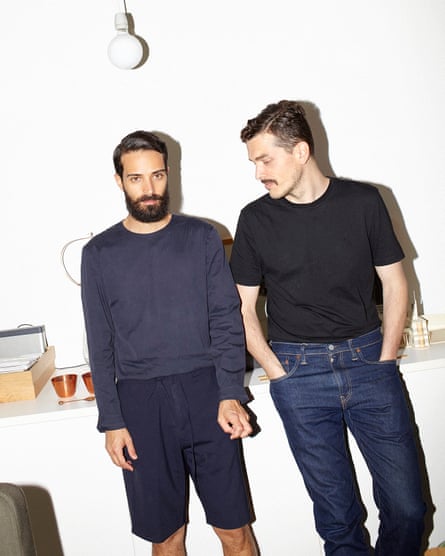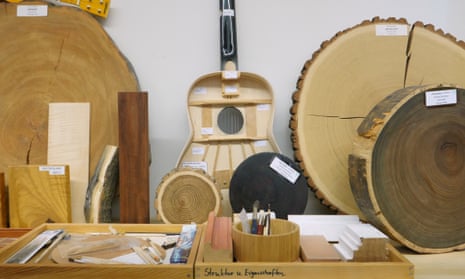What’s not to like about wood? It sucks up carbon dioxide from the atmosphere as it grows, then spits it out as lovely lengths of golden timber, ready to use for everything from eco-friendly buildings to biodegradable paper straws and cardboard cups. It is nature’s wonder material, produced in an endlessly renewable, reusable and recyclable stream of green goodness. Right?
Not so fast, say the designers behind the Serpentine Gallery’s new exhibition, Cambio. The forestry industry is not quite as squeaky clean as the timber trade associations would have you believe, nor are paper and cardboard products necessarily the carbon-negative alternatives they claim to be. In the ethical maze of responsibly sourced materials, it seems we can’t always see the cost of wood for the trees.
Andrea Trimarchi and Simone Farresin, the Italian duo behind Amsterdam-based design studio Formafantasma (meaning “ghost form”), have shone their aesthetically pleasing spotlight on the global dynamics of the timber industry to encourage us to see the material afresh. Marking the first chapter in the Serpentine’s new foray into curating design in addition to its established programme of contemporary art, the exhibition attempts to draw the worlds of science, conservation, engineering and policymaking together in a research-driven show. The results are mixed, with some provocative ideas emerging from a display that has the overall feeling of browsing an Aesop concept store – with wafts of artificial tree scent to match.

One of the first things you encounter is a teetering totem pole of Ikea stools, the £20 Bekväm, reliable provider of kitchen steps and houseplant stands to countless homes around the world. Formafantasma have remade the stool in seven different kinds of wood, from oak to chestnut and cherry, and stacked according to how long the tree grew before it was logged, and how much carbon dioxide it stored in the process.
“The furniture industry’s mass production model is based on the constant renewal of the source material and disposability of the item,” say the designers. “But for wood products to be truly sustainable, they need to have a service life that is at least the same length of time that it took for the tree to grow.” Want the stool in walnut? You’d better plan on keeping it for 120 years.
Nearby, a pair of tables piled high with disposable paper and cardboard products tells a similar story. There’s a smallish pile of reinforced envelopes, a fair stack of paper towels and a couple of towers of takeaway containers and paper cups. The work is titled 5 Years, the amount of time it will take a single pine tree to reabsorb the same amount of carbon dioxide released when each pile is discarded. The sight of just a few cardboard boxes equating to five years’ worth of arboreal labour might make you feel a bit queasy about all that Amazon packaging you dutifully put out with the recycling every week.
On an adjacent wall, a number of wooden objects are lined up in a row, a hammer next to a ping-pong bat, a guitar next to a brush, like evidence gathered from a crime scene. The sense of a police lineup is apt: a clipboard of material analysis beneath each item reveals the amount of endangered timber featured in these everyday objects. A dark, polished violin chin-rest is made of Brazilian rosewood, a timber for which “the risk of illegal logging is high”. The brush handles and drumsticks, meanwhile, are made from ramin, an endangered south-east Asian hardwood, while a spatula handle has been whittled from threatened African bubinga. According to Interpol, which seizes thousands of these items every year, illegally sourced wood products account for 15-30% of all global timber trade.

Despite the number of international conventions in place to curb illegal logging (dutifully printed out and drily displayed on tables), it seems we haven’t come too far from the 19th-century thirst for exotic tropical hardwoods, shown in all its colonial ostentation at the back of the gallery. Trimarchi and Farresin have raided the archives at Kew Gardens and collected a handsome haul of timber specimens, which were originally shown at the Great Exhibition of 1851, just across the park. Marvel at the great polished slice of a mahogany tree trunk brought back from British Honduras, or the jet-black obelisk of Ceylon ebony, advertised as being “used in turnery for fancy articles”.
